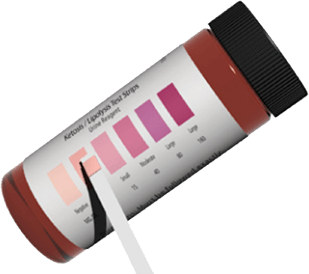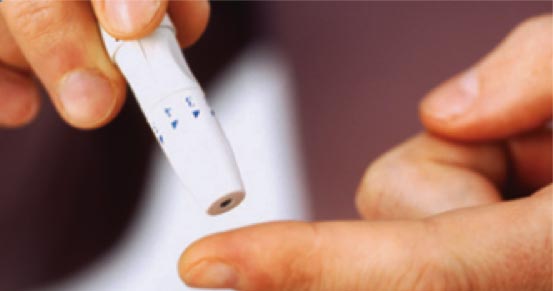Type 1 diabetes

Type 1 diabetes occurs when a person’s body either doesn’t make enough insulin or doesn’t make any at all because the pancreas stops producing insulin due to environmental factors, a virus, or some other unknown trigger. This means the glucose from food isn’t being released from the blood and into the body’s cells, where it’s needed to function properly.
Adults and children of any age can develop type1 diabetes, but it is often diagnosed in childhood.
Symptoms of type 1 diabetes
Symptoms of diabetes can vary, but here are some common ones:
| Infants/Children | Adults |
|---|---|
|
Frequent urination, including unusual bedwetting Increased thirst Sweet, fruit-smelling breath Weight loss Behavior changes Flu-like symptoms, including fatigue |
Unintentional weight loss Extreme thirst and/or hunger Slow healing of injuries such as cuts Frequent urination Blurry vision Lack of menstruation in women |
Causes of type 1 diabetes
Healthcare providers don’t know the exact cause of type 1 diabetes. Some think it may happen when the immune system in the body gets a wrong signal and starts to attack the pancreas, making it unable to produce insulin. When a person’s immune system attacks its own healthy tissue, it is called autoimmunity. Type 1 diabetes is considered an autoimmune disease.
Type 1 diabetes can sometimes run in families, but not everyone who carries the gene (a trait that’s passed on through the cells) associated with diabetes will develop the disease.
Diagnosing type 1 diabetes
Doctors use different tests to determine whether someone has diabetes. They include:
Random blood sugar test: A blood sample is taken at a random time and measures the amount of glucose, or sugar, present in the blood at that moment. If the sugar level is 200 milligrams or more per decimeter (mg/dL) or 11.1 (or 11.1 mmol/L), it may indicate diabetes.
Oral glucose test: This test involves drinking a sugary beverage after fasting and then testing the blood several times for up to two hours to determine how the body is responding to the sugar intake.
Glycated hemoglobin (A1C) test: This test measures the percentage of blood sugar attached to red blood cells, or hemoglobin over the last six to 12 weeks. Since a red blood cell can live about 12 weeks, this test shows the average glucose over that time. An A1C of 6.5 percent or higher indicates diabetes. This test is often performed twice to make sure it’s accurate.
Fasting blood sugar test: A blood sample is taken after an overnight fast. It measures the level of sugar in the blood. A glucose level of less than 100 milligrams or more per decimeter (mg/dL) is normal. Levels 101 to 125 mg/dL indicates prediabetes, and 126 mg/dL and over in two separate tests indicates diabetes.
Diabetes autoantibody tests: These blood tests determine whether a person has type 1 or type 2 diabetes. It looks for antibodies, or specific proteins, that attack viruses or other foreign substances found in the blood. People with type 1 diabetes have these antibodies, but those with type 2 do not.

C-peptide test: This test is used to determine how well a person’s pancreas is making insulin by measuring how much C-peptide is in the blood. While this test isn’t often used to diagnose diabetes, it does give doctors a way to understand how to treat the disease based on how well the pancreas is working.
Ketone testing: This tests the presence of ketones in the urine or blood. The body will use ketones produced by the liver for energy rather than glucose when the pancreas isn’t producing enough insulin. Sometimes ketones show up for other reasons, such as when someone is on a very low-carbohydrate diet, so this test is not always a clear indicator of diabetes.
Treatment of type 1 diabetes
Type 1 diabetes is not curable, but it is treatable. The goal is to keep the blood glucose levels as close to normal as possible by taking insulin. A normal blood glucose level is below 100.
Blood sugar testing
People with type 1 diabetes may need to check their blood sugar levels several times a day, such as before meals and snacks, before and after exercise, and before bedtime.

Ways to check blood sugar levels include:
- Fingerstick checks: This uses a small sharp needle to poke the finger to draw blood, which is then placed on a glucose test strip and fed into a meter that provides a blood sugar level reading.
- Continuous glucose monitors (CGM): These devices use a sensor placed under the skin to measure blood sugars every few minutes. They are often used in combination with insulin pumps.
Insulin delivery

Insulin can be delivered into the body in the following ways:
- Injections: A needle and syringe is used to inject insulin throughout the day as needed, particularly around mealtimes.
- Insulin pen: This device looks like an ink pen but has an insulin cartridge and a very fine needle at the end to inject insulin as needed throughout the day.
- Insulin pump: This device is worn outside the body. It is programmed to deliver certain amounts of insulin through a small tube with a tiny needle at the end that goes under the skin. When a pump is used with CGM, it reduces the need to do fingerstick checks throughout the day to test insulin.
What can happen if type 1 diabetes goes untreated?
When people with type 1 diabetes do not manage their blood sugar levels and do not take insulin, it can lead to serious health problems or even death. These problems can include:
- Eye diseases, including blindness
- Infections
- Blood circulation problems that could lead to foot amputation
- Stroke
- Kidney failure
- Coma
This is why it’s so important to work with your healthcare team to ensure you’re managing your blood sugar levels and using insulin therapy properly.
Managing type 1 diabetes
In addition to insulin therapy, it’s important to make good lifestyle choices to keep blood sugar levels stable. These include:
- Eating healthy foods
- Counting carbohydrates in drinks, snacks, and meals
- Getting regular exercise, daily if possible
- Getting regular health checkups
Managing diabetes is an ongoing process, and there are so many daily tasks involved with your management, which can become challenging at times. Medtronic is here to help wherever you are in your journey.
Looking for more tips? Join the list
Subscribe to our newsletter, News to Infuse, and receive monthly diabetes tips and helpful information.
1. Type 1 Diabetes. Centers for Disease Control https://www.cdc.gov/diabetes/about/about-type-1-diabetes.html. Accessed 24JUN2024.
2. National Diabetes Statistics Report 2021. Estimates of diabetes and its burden in the United States. U.S. Centers for Disease Control. https://www.cdc.gov/diabetes/php/data-research/ . Accessed 24JUN2024.